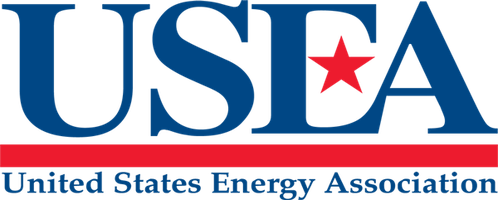LPPC President Highlights Public Power’s Role in Meeting AI-Driven Energy Demand

On Thursday, October 23, LPPC President Tom Falcone joined energy industry leaders at the United States Energy Association’s EnergyTech Connect event for a panel discussion titled “Powering the AI Era: How Load Growth is Transforming the Energy Landscape.”
The panel, moderated by Rich Powell, CEO of the Clean Buyers Energy Association, and featuring Levi Patterson, Director of Energy, Science, and AI Infrastructure Policy at Nvidia, Brianne Miller, Senior Director of Government Affairs at Microsoft, and Clay Rikard, Vice President of System Planning at Southern Company, explored how the rapid expansion of AI data centers is driving demand for energy and what utilities must do to keep pace.
Tom shared that LPPC member utilities may need to add 60 GW or more of new generation on top of the existing 80 GW of peak load over the next seven years to support this surge in demand. Certain regions, such as Arizona, Nebraska, Texas, and Oklahoma, among others, could see their load double within that timeframe.
Public power utilities are increasingly fielding massive generation requests from data centers. However, Tom noted that one of the key challenges lies in assessing how much of a proposed load is “real.” As not-for-profit utilities, ensuring that the financial burden of this once-in-a-generation expansion does not fall on American families is a top priority for LPPC member companies. Reforms such as deposits, milestones, and large-load contracts with data center customers separate speculative requests from real demand and ensure that the cost of these massive investments are paid for by those requesting the new infrastructure.
While public power is investing and building new energy infrastructure to support the growth of the U.S. economy, they cannot do it without action from the policymakers and regulators at the other side of the table. Tom underscored that outdated permitting and licensing processes remain a major bottleneck – delaying projects, inflating costs, and slowing utilities’ ability to meet demand. But many of these challenges have legislative solutions.
Passing key legislation, including the SPEED Act (H.R. 4776), the PERMIT Act (H.R. 3898), and the ESA Amendments of 2025 (H.R. 1897), will make a real difference in ensuring that electric utilities can accelerate the development of critical infrastructure. Together, these reforms would help keep environmental reviews focused on relevant issues, eliminate unnecessary procedural hurdles, and provide timely, science-based decisions, ultimately lowering costs for both utilities and consumers.
The discussion also turned to the role of clean firm energy, sources like carbon capture, hydrogen, and nuclear, in meeting customer demand for reliability and sustainability. Tom pointed out that while utilities are pursuing diverse generation strategies, such as carbon capture at SMUD, long-duration and pumped storage at SRP, and hydrogen at LADWP, the industry still lacks clarity on technology risks, costs, and construction timelines that only come from successfully completing projects. As initial projects have the greatest risk and cost to electric customers, legislative efforts such as the ARC Act, which would help de-risk first-mover advanced nuclear projects by sharing cost overruns, represent the kind of pragmatic policy tools needed to bridge that gap and accelerate clean-firm development.
“To move forward, we need certainty - how much it’s going to cost, how long it’s going to take, and when it will be online,” he said.
The AI revolution is driving unprecedented growth in electricity demand, and public power utilities are at the forefront of meeting that challenge. But doing so will require reform to state and federal permitting and siting processes, coordinated planning, and large investments in new infrastructure to ensure that America’s power system remains reliable, resilient, and ready for the future.
